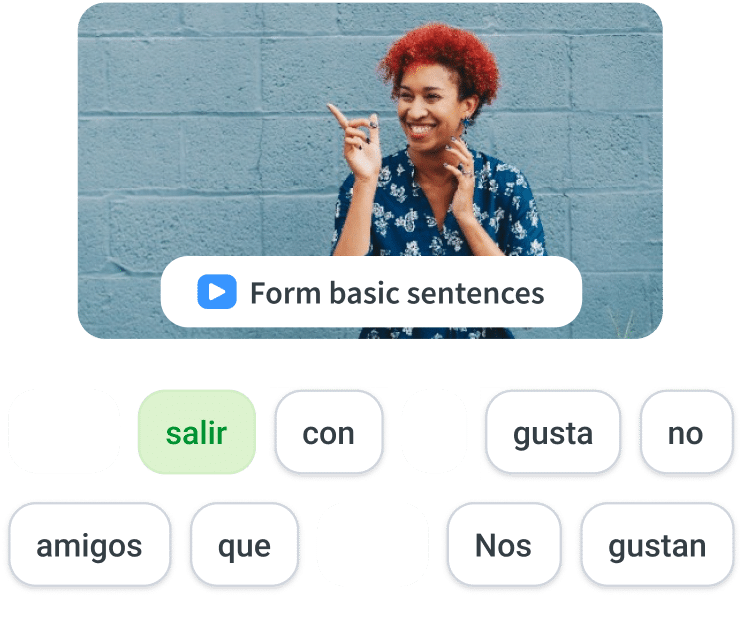
The Most Useful Spanish Abbreviations
How can we upgrade our Spanish writing and communicate quickly and effectively?
One word: Abreviaturas (Abbreviations).
When we use abbreviations, we’re able to speed through ideas and fast-track communication.
Here, I’ll teach you the most common and useful Spanish abbreviations to help guide you into writing like a native speaker!
Contents
- Abbreviations of Titles and Professions
- Abbreviations for Business Situations
- Abbreviations for Measurements
- Abbreviations for Ordinal Numbers
- Abbreviations of Global Importance
- Days of the Week
- Months of the Year
- Abbreviations for Texting
- The Inside Scoop on Spanish Abbreviations
Download: This blog post is available as a convenient and portable PDF that you can take anywhere. Click here to get a copy. (Download)
Abbreviations of Titles and Professions
These abbreviations are all logical shortened versions of the words they represent, meaning that even beginner Spanish learners can use them with ease.
Remember that some Spanish word endings change to reflect either a feminine or masculine gender, and professional titles are in that category of words.
It’s important to note that introductory titles are not capitalized in the full form, but are capitalized in their abbreviation.
Important Titles
Common Professions
- Dr. — doctor (Doctor, masculine)
- Dra. — doctora (Doctor, feminine)
- Lic. — licenciado / licenciada (Doctor, Lawyer, masculine/feminine)
- Prof. — profesor (Professor, masculine)
- Profa. — profesora (Professor, feminine)
- Pdte. — presidente (President, masculine)
- Pdta. — presidenta (President, feminine)
Abbreviations for Business Situations
Business abbreviations make workplace communication less time consuming and universally understood to all employees.
Some business phrases are so polite!
Commonly Used in Correspondence
- A/A — a la atención (to the attention)
- Atte. — atentamente (sincerly)
- Ud., Uds. — usted / ustedes (you)
- s.s.s. — su seguro servidor (yours truly)
- S.R.C. — se ruega contestación (R.S.V.P.)
- Cía. — compañía (company)
- P.D. — posdata (postscript/P.S.)
Reference Abbreviations
- pág. — página (page)
- ms. — manuscrito (manuscript)
- p. ej. — por ejemplo (for example)
- ibíd. — ibídem (ibid./ibidem)
- etc. — etcétera (etc)
- y col. — y colaboradores (et al)
Abbreviations for Measurements
Measuring abbreviations make referencing quantities simple and quick.
- dna. — docena (dozen)
- h — hora (hour)
- kg — kilogramos (kilograms)
- cm — centímetros (centimeters)
- l — litros (liters)
- mm — milímetros (millimeters)
Abbreviations for Ordinal Numbers
Ordinal numbers indicate positions. They’re necessary to communicate when one item comes before or after another or to show what number something is on a list or score sheet.
Spanish ordinal numbers agree with the gender of the word they modify, so they can be either masculine or feminine.
Ordinal number abbreviations in Spanish are formed by writing the actual number followed by a period and either -º for a masculine noun or -ª.
- 1.º(ª) — primero ( primera ) (first)
- 2.º(ª) — segundo ( segunda ) (second)
- 3.º(ª) — tercero ( tercera ) (third)
- 4.º(ª) — cuarto ( cuarta ) (fourth)
- 5.º(ª) — quinto ( quinta ) (fifth)
- 6.º(ª) — sexto ( sexta ) (sixth)
- 7.º(ª) — séptimo ( séptima ) (seventh)
- 8.º(ª) — octavo ( octava ) (eighth)
- 9.º(ª) — noveno ( novena ) (ninth)
- 10.º(ª) — décimo ( décima ) (tenth)
Abbreviations of Global Importance
Some global organizations, directional words and even place names are very handy abbreviations for learners to know!
- ONU — Organización de Naciones Unidas (United Nations)
- OTAN — Organización del Tratado Atlántico Norte (North Atlantic Treaty Organization/NATO)
- OMS — Organización Mundial de la Salud (World Health Organization/WHO)
- UE — Unión Europea (European Union/EU)
- N — norte (north)
- S — sur (south)
- E — este (east)
- O — oeste (west)
- EE. UU. — Estados Unidos (United States)
- Esp. — España (Spain)
Days of the Week
Spanish abbreviations for the days of the week are pretty straightforward. The X is used to differentiate martes (Tuesday) from miércoles (Wednesday), but the other days are very easily identified by their abbreviations!
- L — lunes (Monday)
- M — martes (Tuesday)
- X — miércoles (Wednesday)
- J — jueves (Thursday)
- V — viernes (Friday)
- S — sábado (Saturday)
- D — domingo (Sunday)
Months of the Year
As well as days of the week, Spanish words for months of the year also have abbreviations.
- en. — enero (January)
- febr. — febrero (February)
- mzo. — marzo (March)
- abr. — abril (April)
- my. — mayo (May)
- jun. — junio (June)
- jul. — julio (July)
- ag./agto. — agosto (August)
- sept./set. — septiembre (September)
- oct. — octubre (October)
- nov. — noviembre (November)
- dic. — diciembre (December)
There are also three-letter abbreviations for the months of the year in Spanish, often used in calendars and charts.
- ENE — enero (January)
- FEB — febrero (February)
- MAR — marzo (March)
- ABR — abril (April)
- MAY — mayo (May)
- JUN — junio (June)
- JUL — julio (July)
- AGO — agosto (August)
- SET/SEP — septiembre (September)
- OCT — octubre (October)
- NOV — noviembre (November)
- DIC — diciembre (December)
Abbreviations for Texting
Texting is the ideal medium for maximizing Spanish abbreviation usage. In other words, texting is an abbreviation aficionado’s dream platform—in any language!
Learn all the ones you consider relevant to your lifestyle right away. The faster you begin using them, the more comfortable you’ll get with them. You’ll not only see these abbreviations in friendly text messages, but also on Instagram, Facebook, Twitter and other social media platforms.
Try them out and jazz up your Spanish text conversations!
Get your fingers ready to learn and use some Spanish text abbreviations:
- qtal? — ¿qué tal? (what’s up?)
- xq? — ¿por qué? (why?)
- no c — no sé (I don’t know)
- bn — bien (good)
- pf — por favor (please)
- tb — también (also)
- bs — besos (kisses)
- tq — te quiero (I love you)
- nph — no puedo hablar (I can’t talk)
- ntp — no te preocupes (don’t worry)
- ¡kyat! — ¡cállate! (shut up!)
- cdt — cuídate (take care)
- ymm — llámame (call me)
The Inside Scoop on Spanish Abbreviations
The Royal Spanish Academy ( La Real Academia Española , RAE) is the entity concerned with all issues pertaining to the language, including official abbreviations.
Since Spanish uses the Latin alphabet, which English speakers are of course familiar with, it’s a snap to recognize the many abbreviations this language uses.
As they are in any language, abbreviations in Spanish are particularly useful for business writing. They’re also utilized in both formal and informal communication—even in everyday conversations.
Your Spanish writing will be enriched by the abbreviations you learn, showing your familiarity with the language, while making it less complicated to understand informal written Spanish.
Here are some quick tips to use abbreviations in Spanish:
1. Most Spanish abbreviations are not capitalized. In English, they’re often capitalized. Personal titles, however, in Spanish and English both are capitalized, so there’s no confusion there!
2. In Spanish, abbreviations such as 3.º (third), EE. UU. (USA) and Sr. (Mr.) always have a period and almost always end with one. However, there are a few exceptions to this: símbolos (symbols)—cm, kg, N— and siglas (acronyms), such as ONU (United Nations), are never written with a period. Non-standard abbreviations, like those used in text messages, don’t follow these rules.
For many of us, our Spanish language goal is to be able to communicate like a native speaker. We want to communicate like someone born in Latin America or Spain. We want to move thoughts and conversations from point A to point B at the speed of light.
And with digital communication being such a major component of our lives, learning how to communicate in Spanish abbreviations is also important.
You’re in luck here, though, because there are so many cool Spanish abbreviations—and they’ll open up the door to fast written communication!
Whether you’re using abbreviations for travel, business or maybe a pleasurable adventure to Madrid or any Spanish country—good communication is key. And abbreviations are sure to put a burst of speed into your written messages!
Download: This blog post is available as a convenient and portable PDF that you can take anywhere. Click here to get a copy. (Download)





